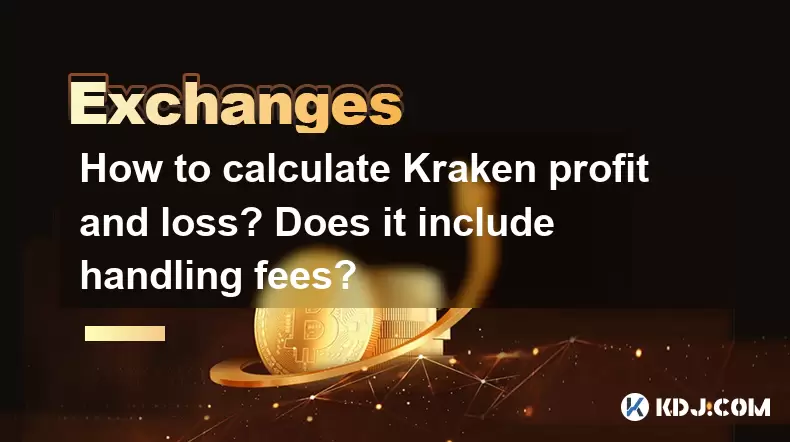-
 Bitcoin
Bitcoin $117500
2.15% -
 Ethereum
Ethereum $3911
6.19% -
 XRP
XRP $3.316
10.79% -
 Tether USDt
Tether USDt $1.000
0.01% -
 BNB
BNB $787.2
2.24% -
 Solana
Solana $175.2
4.15% -
 USDC
USDC $0.9999
0.00% -
 Dogecoin
Dogecoin $0.2225
8.40% -
 TRON
TRON $0.3383
0.28% -
 Cardano
Cardano $0.7868
6.02% -
 Stellar
Stellar $0.4382
9.34% -
 Hyperliquid
Hyperliquid $40.92
7.56% -
 Sui
Sui $3.764
7.63% -
 Chainlink
Chainlink $18.48
10.66% -
 Bitcoin Cash
Bitcoin Cash $582.1
1.88% -
 Hedera
Hedera $0.2601
6.30% -
 Avalanche
Avalanche $23.33
4.94% -
 Ethena USDe
Ethena USDe $1.001
0.02% -
 Litecoin
Litecoin $122.3
2.04% -
 UNUS SED LEO
UNUS SED LEO $8.969
-0.27% -
 Toncoin
Toncoin $3.339
0.86% -
 Shiba Inu
Shiba Inu $0.00001287
4.30% -
 Uniswap
Uniswap $10.43
7.38% -
 Polkadot
Polkadot $3.861
5.08% -
 Dai
Dai $1.000
0.02% -
 Bitget Token
Bitget Token $4.513
3.41% -
 Monero
Monero $267.7
-6.18% -
 Cronos
Cronos $0.1499
4.14% -
 Pepe
Pepe $0.00001110
5.15% -
 Aave
Aave $284.9
8.28%
How to calculate Kraken profit and loss? Does it include handling fees?
To calculate profit/loss on Kraken, use the formula: Profit/Loss = Selling Price - Buying Price - Fees, ensuring to include handling fees for accurate results.
May 18, 2025 at 07:00 am

Calculating profit and loss on Kraken, a popular cryptocurrency exchange, is essential for any trader looking to monitor their performance and make informed decisions. This article will guide you through the process of calculating your profit and loss on Kraken, and address whether handling fees are included in these calculations.
Understanding Profit and Loss on Kraken
Profit on Kraken refers to the positive difference between the selling price and the buying price of a cryptocurrency. Loss, on the other hand, occurs when the selling price is lower than the buying price. To accurately calculate your profit or loss, you need to consider the total cost, which includes the purchase price and any associated fees.
Step-by-Step Guide to Calculating Profit and Loss
To calculate your profit or loss on Kraken, follow these steps:
- Log into your Kraken account: Navigate to the Kraken website and enter your login credentials.
- Go to the Trade History section: Once logged in, click on the 'Trade' tab and then select 'History' to view your past transactions.
- Identify the relevant trades: Look for the trades you want to calculate profit or loss for. You will see columns for 'Date', 'Pair', 'Type', 'Amount', 'Price', and 'Fee'.
- Record the trade details: Note down the buying price, selling price, and any fees associated with the trades.
- Calculate the profit or loss: Use the formula: Profit/Loss = Selling Price - Buying Price - Fees. If the result is positive, you have made a profit; if negative, you have incurred a loss.
Example Calculation
Let's say you bought 1 BTC at $30,000 and sold it at $35,000. The buying fee was $15 and the selling fee was $20. Here's how you would calculate your profit:
- Buying Price: $30,000
- Selling Price: $35,000
- Buying Fee: $15
- Selling Fee: $20
Using the formula: Profit = $35,000 - $30,000 - $15 - $20 = $4,965. Your profit in this case is $4,965.
Handling Fees and Their Impact on Profit and Loss
Handling fees, also known as transaction fees, are charges applied by Kraken for executing trades. These fees are crucial to consider when calculating your profit and loss because they directly affect the total cost of your trades.
Kraken's fee structure varies based on the type of trade and the trading volume. For example, maker fees are typically lower than taker fees. You can find the exact fee structure on Kraken's website under the 'Fees' section.
When calculating profit and loss, always include the handling fees in your calculations. Excluding these fees can lead to an overestimation of your profit or an underestimation of your loss.
Using Kraken's Built-In Tools
Kraken offers a Ledger feature that can help you track your profit and loss more efficiently. Here's how to use it:
- Access the Ledger: From the Kraken homepage, navigate to the 'Funding' tab and select 'Ledger'.
- Filter transactions: Use the filters to view only the trades you are interested in.
- Review the Ledger entries: Each entry will show the transaction type, amount, and any associated fees. You can use this data to manually calculate your profit or loss.
Manual vs. Automated Calculations
While manual calculations provide a detailed understanding of each trade, automated tools can save time and reduce errors. Some traders use third-party software that integrates with Kraken's API to automatically calculate profit and loss. These tools can provide real-time data and detailed reports, making it easier to monitor your performance.
Considerations for Accurate Calculations
To ensure accurate profit and loss calculations, consider the following:
- Currency Conversion: If you trade in multiple currencies, ensure you convert all values to a single currency for consistent calculations.
- Time Zone Differences: Be aware of time zone differences when recording trade times, as this can affect the accuracy of your calculations.
- Withdrawal and Deposit Fees: Besides trading fees, also consider any fees associated with depositing or withdrawing funds from Kraken.
Frequently Asked Questions
Q: Can I use Kraken's mobile app to calculate profit and loss?
A: Yes, the Kraken mobile app provides access to your trade history and ledger, allowing you to manually calculate profit and loss. However, the app does not have a built-in profit and loss calculator, so you will need to perform the calculations yourself or use a third-party tool.
Q: How often should I calculate my profit and loss on Kraken?
A: It is recommended to calculate your profit and loss regularly, such as weekly or monthly, to stay informed about your trading performance. Frequent calculations can help you make timely adjustments to your trading strategy.
Q: Are there any tools that can help me track my profit and loss across multiple exchanges, including Kraken?
A: Yes, several third-party tools and platforms, such as CoinTracking or CryptoTrader.Tax, can integrate with multiple exchanges, including Kraken, to provide comprehensive profit and loss tracking and reporting. These tools can save you time and provide a holistic view of your cryptocurrency portfolio.
Q: How do I handle unrealized profit and loss on Kraken?
A: Unrealized profit and loss refer to gains or losses on positions that have not been closed. To track unrealized profit and loss, you can manually calculate the difference between the current market price and your purchase price for open positions. Some third-party tools also offer features to track unrealized profit and loss in real-time.
Disclaimer:info@kdj.com
The information provided is not trading advice. kdj.com does not assume any responsibility for any investments made based on the information provided in this article. Cryptocurrencies are highly volatile and it is highly recommended that you invest with caution after thorough research!
If you believe that the content used on this website infringes your copyright, please contact us immediately (info@kdj.com) and we will delete it promptly.
- XRP ETF, Bitcoin ETF, and Japan: A New Era for Crypto Investing?
- 2025-08-08 14:30:12
- Crypto, Congress, and Bills: Navigating the Regulatory Landscape in 2025
- 2025-08-08 14:30:12
- Union Jack Oil, Unused Gas, and Bitcoin: A New York Minute on UK's Crypto-Energy Play
- 2025-08-08 14:50:12
- Bitcoin Price: Bullish Flag Points to $123K Breakout?
- 2025-08-08 14:50:12
- Crypto Group's WNBA Dildo Toss: Meme Coin Mania or Just Plain Dumb?
- 2025-08-08 14:55:13
- Stablecoins, Hong Kong, and On-Chain Finance: Navigating the Regulatory Maze
- 2025-08-08 12:30:12
Related knowledge

How to use margin trading on Poloniex
Aug 08,2025 at 09:50am
Understanding Margin Trading on Poloniex

How to use advanced trading on Gemini
Aug 08,2025 at 04:07am
Understanding Advanced Trading on GeminiAdvanced trading on Gemini refers to a suite of tools and order types designed for experienced traders who wan...

How to deposit USD on Bitstamp
Aug 07,2025 at 05:18pm
Understanding Bitstamp and USD DepositsBitstamp is one of the longest-standing cryptocurrency exchanges in the industry, offering users the ability to...

How to use the Kraken Pro interface
Aug 08,2025 at 09:57am
Understanding the Kraken Pro Interface LayoutThe Kraken Pro interface is designed for both novice and experienced traders seeking a streamlined experi...

How to find my transaction ID on Gemini
Aug 08,2025 at 12:50am
Understanding the Transaction ID in Cryptocurrency ExchangesA transaction ID (TXID) is a unique alphanumeric string that identifies a specific transfe...

How to calculate crypto taxes from Binance
Aug 08,2025 at 07:56am
Understanding Cryptocurrency Taxation on BinanceCalculating crypto taxes from Binance requires a clear understanding of how tax authorities classify d...

How to use margin trading on Poloniex
Aug 08,2025 at 09:50am
Understanding Margin Trading on Poloniex

How to use advanced trading on Gemini
Aug 08,2025 at 04:07am
Understanding Advanced Trading on GeminiAdvanced trading on Gemini refers to a suite of tools and order types designed for experienced traders who wan...

How to deposit USD on Bitstamp
Aug 07,2025 at 05:18pm
Understanding Bitstamp and USD DepositsBitstamp is one of the longest-standing cryptocurrency exchanges in the industry, offering users the ability to...

How to use the Kraken Pro interface
Aug 08,2025 at 09:57am
Understanding the Kraken Pro Interface LayoutThe Kraken Pro interface is designed for both novice and experienced traders seeking a streamlined experi...

How to find my transaction ID on Gemini
Aug 08,2025 at 12:50am
Understanding the Transaction ID in Cryptocurrency ExchangesA transaction ID (TXID) is a unique alphanumeric string that identifies a specific transfe...

How to calculate crypto taxes from Binance
Aug 08,2025 at 07:56am
Understanding Cryptocurrency Taxation on BinanceCalculating crypto taxes from Binance requires a clear understanding of how tax authorities classify d...
See all articles

























































































